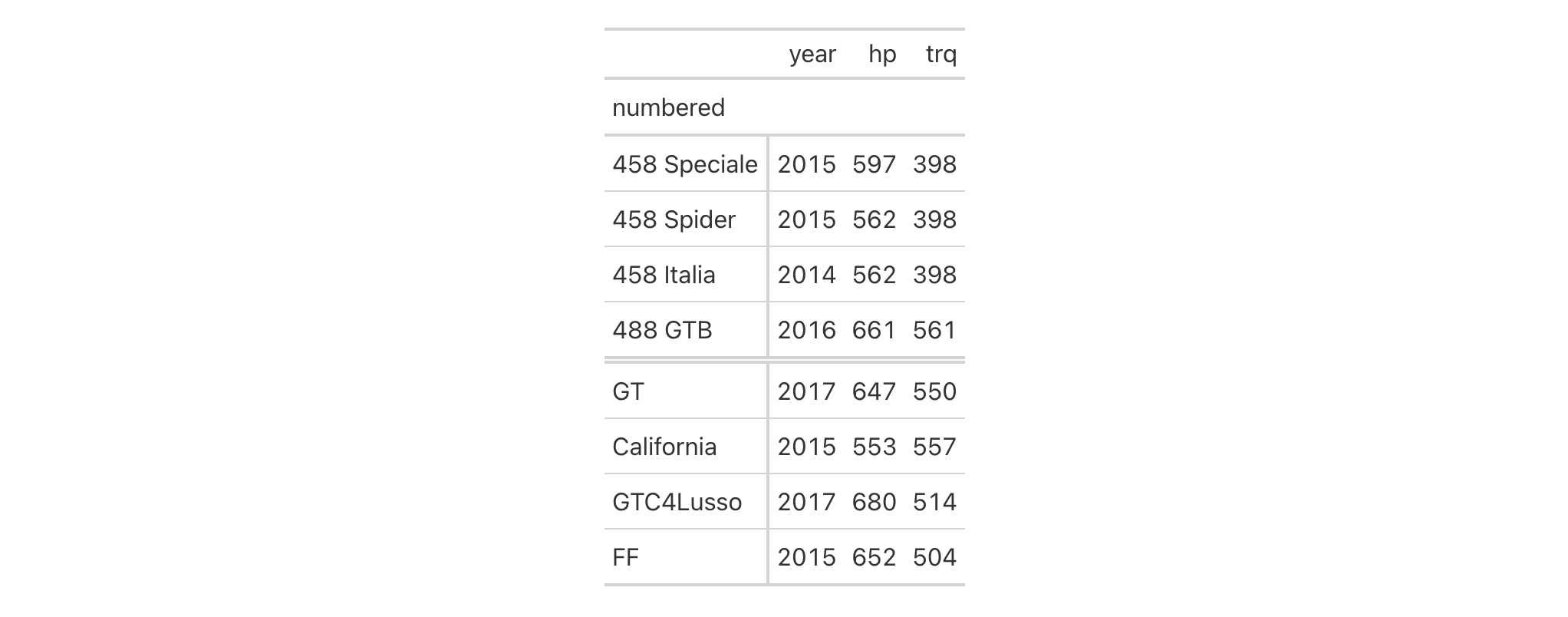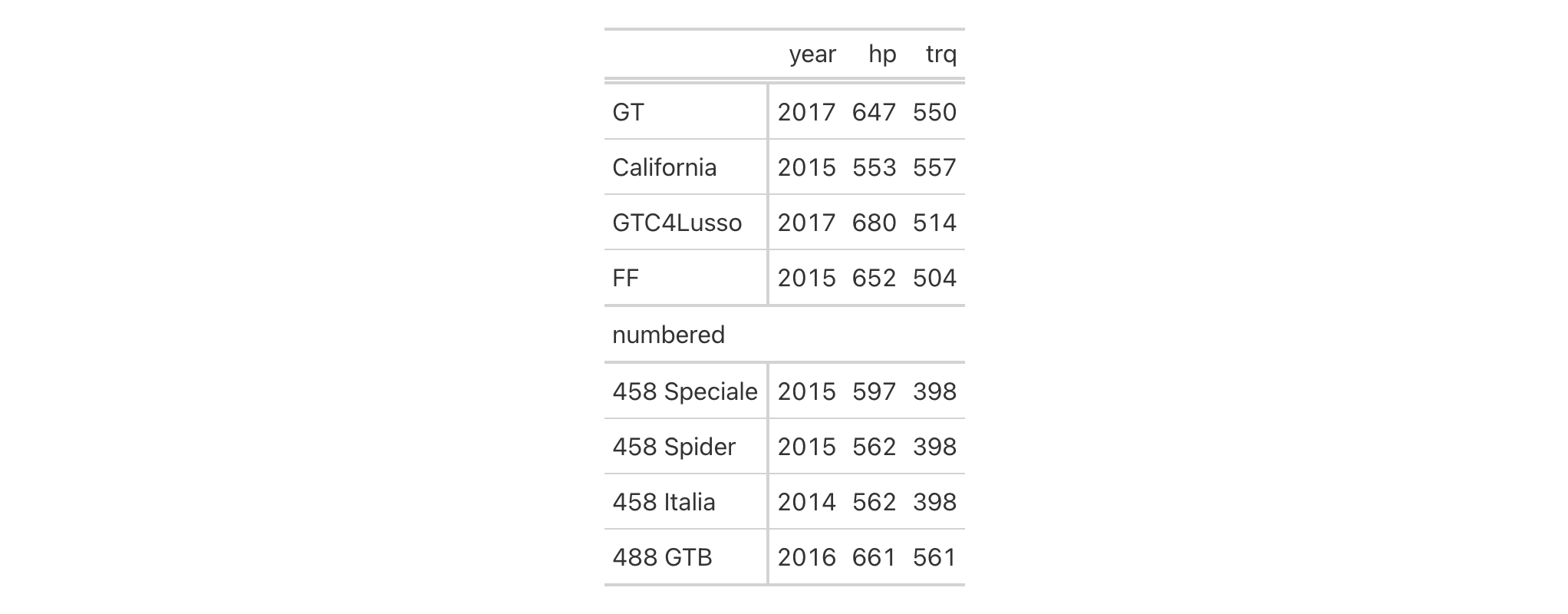tab_row_group: Add a row group to a gt table
Description
Create a row group with a collection of rows. This requires specification of
the rows to be included, either by supplying row labels, row indices, or
through use of a select helper function like starts_with(). To modify the
order of row groups, use the row_group_order() function.
To set a default row group label for any rows not formally placed in a row
group, we can use a separate call to tab_options(row_group.default_label = <label>). If this is not done and there are rows that haven't been placed
into a row group (where one or more row groups already exist), those rows
will be automatically placed into a row group without a label. To restore
labels for row groups not explicitly assigned a group,
tab_options(row_group.default_label = "") can be used.
Usage
tab_row_group(data, label, rows, id = label, others_label = NULL, group = NULL)Value
An object of class gt_tbl.
Arguments
- data
A table object that is created using the
gt()function.- label
The text to use for the row group label.
- rows
The rows to be made components of the row group. Can either be a vector of row captions provided in
c(), a vector of row indices, or a helper function focused on selections. The select helper functions are:starts_with(),ends_with(),contains(),matches(),one_of(), andeverything().- id
The ID for the row group. When accessing a row group through
cells_row_groups()(when usingtab_style()ortab_footnote()) theidvalue is used as the reference (and not thelabel). If anidis not explicitly provided here, it will be taken from thelabelvalue. It is advisable to set an explicitidvalue if you plan to access this cell in a later function call and the label text is complicated (e.g., contains markup, is lengthy, or both). Finally, when providing anidvalue you must ensure that it is unique across all ID values set for row groups (the function will stop ifidisn't unique).- others_label
This argument is deprecated. Instead use
tab_options(row_group.default_label = <label>).- group
This argument is deprecated. Instead use
label.
Examples
Use gtcars to create a gt table and use tab_row_group() to add two
row groups with the labels: numbered and NA. The row group with the NA
label ends up being rendered without a label at all.
gtcars %>%
dplyr::select(model, year, hp, trq) %>%
dplyr::slice(1:8) %>%
gt(rowname_col = "model") %>%
tab_row_group(
label = "numbered",
rows = matches("^[0-9]")
)

Use gtcars to create a gt table. Add two row groups with the labels
powerful and super powerful. The distinction between the groups is
whether hp is lesser or greater than 600 (governed by the expressions
provided to the rows argument).
gtcars %>%
dplyr::select(model, year, hp, trq) %>%
dplyr::slice(1:8) %>%
gt(rowname_col = "model") %>%
tab_row_group(
label = "powerful",
rows = hp <= 600
) %>%
tab_row_group(
label = "super powerful",
rows = hp > 600
)

Function ID
2-4
See Also
Other part creation/modification functions:
tab_footnote(),
tab_header(),
tab_options(),
tab_source_note(),
tab_spanner_delim(),
tab_spanner(),
tab_stub_indent(),
tab_stubhead(),
tab_style()